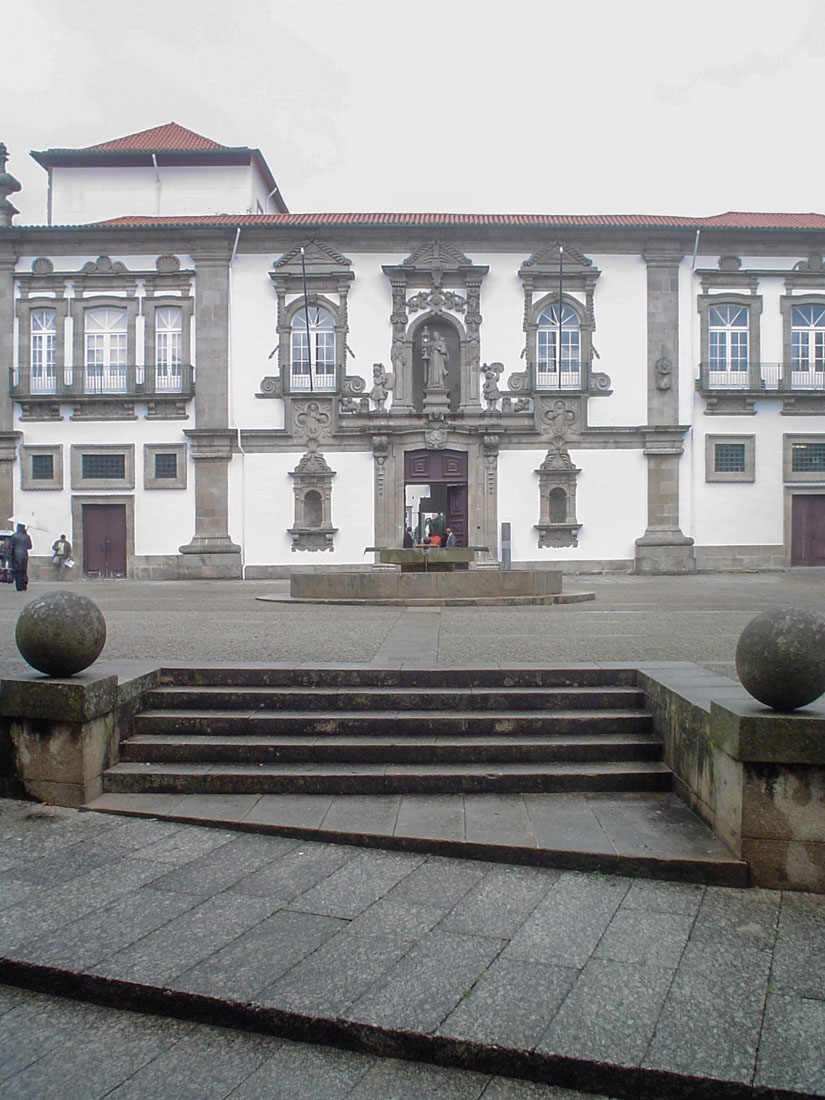 |
 |
 |
 |

Urban Renovation
Guimarães
1987 - 1992
To improve the attractivity of the historic center of Guimarães, the city council of the
Portuguese town decided to carry out a renovation program for its
squares. The renowned architect Fernando Távora could be won over for
this concern. Affected by this program were the Praça do Município, the
Praça de Santiago, the Largo de João Franco and the Largo da Condessa
de Juncal. Although each one of these squares was carefully planned and
realized, the renovation program was completed in a remarkably short
time. Each square was given a special form depending on its functions,
the environment and the associated time. So each place was assigned a historical epoch. The Praça do Município embodies the
"Baroque", the Praça de Santiago the "Middle Ages", the Largo de João
Franco the "Renaissance" and the Largo da Condessa de Juncal the
"Historicism". Through various measures, the unity could be
guaranteed despite the diversity. Granite natural stones are used for
the paving and urban furniture. The squares are interpreted as distinctly
urban places and are planted by a few but purposefully planted trees.
Um das historischen Zentrum von Guimarães aufzuwerten beschloss der Stadtrat der portugiesischen Kleinstadt ein Renovierungsprogramm für seine Plätze durchzuführen. Der renommierte Architekt Fernando Távora konnte für dieses Anliegen gewonnen werden. Betroffen von diesem Programm waren die Praça do Município, die Praça de Santiago, der Largo de João Franco und der Largo da Condessa de Juncal. Obwohl jeder einzelne dieser Plätze sorgfältig geplant und realisiert wurde, konnte das Renovierungsprogramm in einem bemerkenswert kurzen Zeitraum abgeschlossen werden. Jedem Platz wurde in Abhängigkeit seiner Funktionen, der Umgebung und der zugehörigen Zeit eine besondere Ausprägung gegeben. So wurde jedem Platz eine baugeschichtliche Epoche zugeteilt. Die Praça do Município verkörpert den "Barock", die Praça de Santiago das "Mittelalter", der Largo de João Franco die "Renaissance" und der Largo da Condessa de Juncal den "Historismus". Durch verschiedene Massnahmen konnte die Enheitlichkeit trotz der Vielfalt gewährleistet werden. Granit Natursteine werden für die Platzbeläge und das Stadtmobiliar verwendet. Die Plätze sind als eindeutig städtische Orte interpretiert und werden von wenigen, aber gezielt gepflanzten Bäumen begrünt.
Um das historischen Zentrum von Guimarães aufzuwerten beschloss der Stadtrat der portugiesischen Kleinstadt ein Renovierungsprogramm für seine Plätze durchzuführen. Der renommierte Architekt Fernando Távora konnte für dieses Anliegen gewonnen werden. Betroffen von diesem Programm waren die Praça do Município, die Praça de Santiago, der Largo de João Franco und der Largo da Condessa de Juncal. Obwohl jeder einzelne dieser Plätze sorgfältig geplant und realisiert wurde, konnte das Renovierungsprogramm in einem bemerkenswert kurzen Zeitraum abgeschlossen werden. Jedem Platz wurde in Abhängigkeit seiner Funktionen, der Umgebung und der zugehörigen Zeit eine besondere Ausprägung gegeben. So wurde jedem Platz eine baugeschichtliche Epoche zugeteilt. Die Praça do Município verkörpert den "Barock", die Praça de Santiago das "Mittelalter", der Largo de João Franco die "Renaissance" und der Largo da Condessa de Juncal den "Historismus". Durch verschiedene Massnahmen konnte die Enheitlichkeit trotz der Vielfalt gewährleistet werden. Granit Natursteine werden für die Platzbeläge und das Stadtmobiliar verwendet. Die Plätze sind als eindeutig städtische Orte interpretiert und werden von wenigen, aber gezielt gepflanzten Bäumen begrünt.
